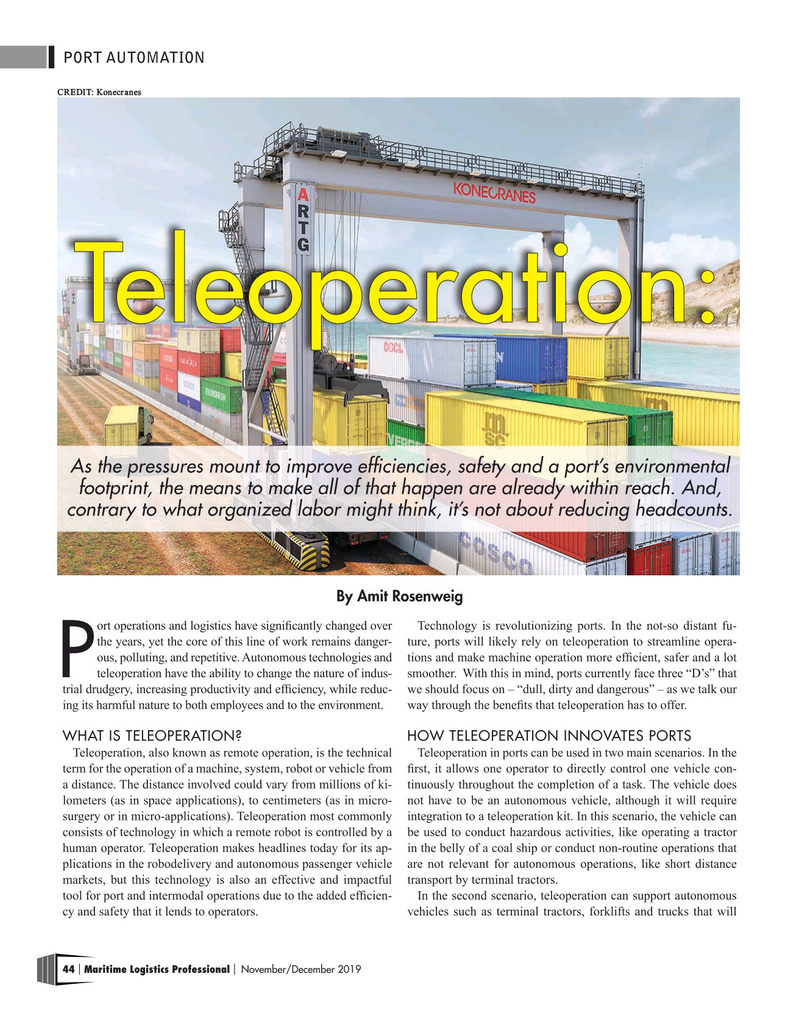
Page 44: of Maritime Logistics Professional Magazine (Nov/Dec 2019)
Short Sea Shipping Ports
Read this page in Pdf, Flash or Html5 edition of Nov/Dec 2019 Maritime Logistics Professional Magazine
PORT AUTOMATION
CREDIT: Konecranes
Teleoperation:
As the pressures mount to improve effciencies, safety and a port’s environmental footprint, the means to make all of that happen are already within reach. And, contrary to what organized labor might think, it’s not about reducing headcounts.
By Amit Rosenweig ort operations and logistics have signifcantly changed over Technology is revolutionizing ports. In the not-so distant fu- the years, yet the core of this line of work remains danger- ture, ports will likely rely on teleoperation to streamline opera- ous, polluting, and repetitive. Autonomous technologies and tions and make machine operation more effcient, safer and a lot
P teleoperation have the ability to change the nature of indus- smoother. With this in mind, ports currently face three “D’s” that trial drudgery, increasing productivity and effciency, while reduc- we should focus on – “dull, dirty and dangerous” – as we talk our ing its harmful nature to both employees and to the environment. way through the benefts that teleoperation has to offer.
WHAT IS TELEOPERATION? HOW TELEOPERATION INNOVATES PORTS
Teleoperation, also known as remote operation, is the technical Teleoperation in ports can be used in two main scenarios. In the term for the operation of a machine, system, robot or vehicle from frst, it allows one operator to directly control one vehicle con- a distance. The distance involved could vary from millions of ki- tinuously throughout the completion of a task. The vehicle does lometers (as in space applications), to centimeters (as in micro- not have to be an autonomous vehicle, although it will require surgery or in micro-applications). Teleoperation most commonly integration to a teleoperation kit. In this scenario, the vehicle can consists of technology in which a remote robot is controlled by a be used to conduct hazardous activities, like operating a tractor human operator. Teleoperation makes headlines today for its ap- in the belly of a coal ship or conduct non-routine operations that plications in the robodelivery and autonomous passenger vehicle are not relevant for autonomous operations, like short distance markets, but this technology is also an effective and impactful transport by terminal tractors.
tool for port and intermodal operations due to the added effcien- In the second scenario, teleoperation can support autonomous cy and safety that it lends to operators. vehicles such as terminal tractors, forklifts and trucks that will 44 Maritime Logistics Professional November/December 2019 | |

 43
43

 45
45
